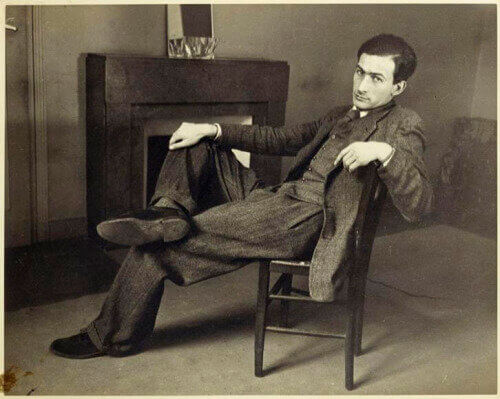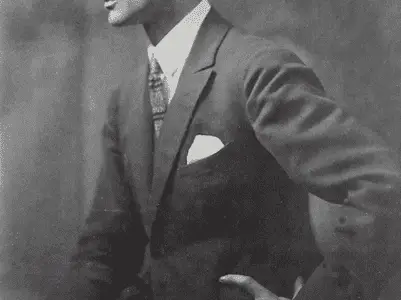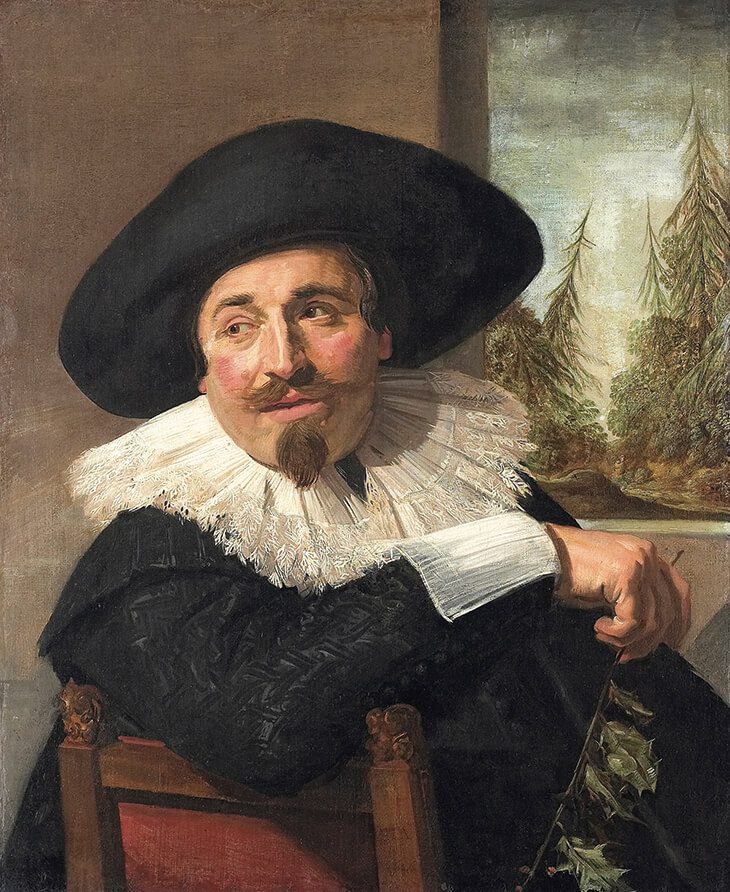Balthus the Controversial Artist

Enter the mysterious world of Balthus, a highly contentious painter renowned for his enigmatic and provocative works. In-depth analysis of his life, artistic approach, and debates surrounding his work are provided in this article.

Balthus was born Balthasar Klossowski de Rola on February 29, 1908, in Paris, France. Throughout his life, he explored art, pursued knowledge, and underwent unusual experiences. His upbringing and family background had a big impact on how he developed as an artist.
Balthus was a member of an artistic family. His mother, Baladine Klossowska, was a gifted amateur artist, and his father, Erich Klossowski, was a painter. Balthus was raised in a free-spirited environment where he was exposed to a wide range of artistic influences and was surrounded by other creative people.
Balthus showed prodigious talent and a deep appreciation of art during his formative years. His father gave him early artistic instruction, and he immersed himself in the study of classical art. In addition, he studied the works of old masters like Masaccio and Piero della Francesca, which had a profound effect on his artistic vision.
At the Académie de la Grande Chaumière in Paris, where he studied under renowned painter Fernand Léger, Balthus continued his artistic education. As he started to develop his distinct style and explore themes that would later become recognisable in his work, this time period marked an important stage in his artistic development.
Balthus became well-known in the 1930s for his paintings of young adolescents. These contentious portrayals frequently conflated innocence and eroticism by placing his subjects in ambiguous, dreamlike settings. Balthus’ investigation of sensuality and taboo subject matter drew interest from the art world and criticism from society at large.
Balthus lived a life of wanderlust and inspiration seeking. He made extensive trips across Europe, frequently looking for solitude in remote areas. His artistic vision was further enhanced by these travels, which exposed him to various cultures, landscapes, and artistic traditions.
Despite his contentious reputation, Balthus experienced success and acclaim at various points in his career. He was chosen to join the French Académie des Beaux-Arts, which strengthened his position within the world of art. His artwork received both praise and criticism when it was displayed in renowned galleries and museums around the world.
Balthus’ private life was as eccentric as his work. He had three kids after getting married to Japanese countess Setsuko Ideta. Living in various places and embracing a nomadic lifestyle, their relationship was characterised by an unconventional way of life.
Balthus kept painting up until his passing in 2001, leaving a legacy of fascinating and thought-provoking works of art. His contributions to the field of art have led to ongoing debates about the limitations of artistic expression, the place of the artist in society, and the investigation of contentious subjects.
With its eclectic mix of artistic influences, quirky personality traits, and contentious themes, Balthus’s life and background make for an intriguing backdrop to his artistic journey. The interpretation of his work is made deeper and richer by knowing the context in which he lived and the experiences that shaped his artistic vision.

Understanding Balthus’s Artistic Style
#Understanding Balthus’s artistic style requires a close look at his methods, themes, and underlying symbolism. Balthus, who was renowned for his painstaking attention to detail and his masterful use of light and colour, created a distinctive style that incorporated aspects of classical painting with a dash of surrealism.
His precise and intricate brushwork is one of Balthus’s signature artistic qualities. He took a meticulous approach, delicately and precisely rendering every detail. His compositions had an air of refinement and precision thanks to his frequent use of controlled and smooth brushstrokes. He was able to capture the fine details of his subjects’ features, attire, and surroundings because of his attention to detail.
Balthus is particularly renowned for his depictions of young adolescent girls when it comes to subject matter. These figures frequently take up the centre stage in his compositions, grabbing viewers’ attention with their mysterious presence. Balthus’ handling of these subjects is distinguished by a special blending of innocence and sensuality, erasing the distinction between youth and adulthood.
Balthus’ compositions are frequently distinguished by their balance and simplicity. He gave careful consideration to the overall harmony and visual balance as he placed his subjects within the frame. His compositions frequently have few elements, which helps the viewer concentrate on the main subject and its surroundings.
The use of colour and light is essential to Balthus’ artistic vision. His ability to capture the effects of natural light, which he used to improve the mood and atmosphere of his paintings, was particularly impressive. The interplay of light and shadow in Balthus’s works gives them depth and dimension, which adds to their overall sense of realism.
Another significant component of Balthus’s art is symbolism. His works frequently include oblique allusions and allegorical details that encourage viewers to decipher their meaning. Balthus was renowned for incorporating a sense of mystery and ambiguity into his works, allowing for personal interpretation and exploration.
Balthus’ work can be characterised as an overall harmonious synthesis of technical dexterity, symbolism, and a singular exploration of the human form. His complex subjects, expert use of light, and meticulous attention to detail all add to his work’s mystifying and thought-provoking qualities. Understanding Balthus’s artistic approach enables us to appreciate the breadth and complexity of his creations as well as the depth of meaning he incorporated into each of his paintings.
Balthus Criticisms and Controversies
Due to the provocative and occasionally taboo subject matter that Balthus explored in his paintings, his work has always been a source of contention and criticism. Young adolescent girls are frequently portrayed in suggestive or ambiguous poses in his artwork, and this recurring motif has sparked heated debates in the art community and in society at large.

Balthus is frequently criticised for what critics see as sexualizing his young subjects. His paintings, according to some critics, are exploitative and voyeuristic, objectifying minors for the sake of artistic expression. These detractors contend that such depictions support damaging stereotypes and aid in the sexification of children.
On the other hand, Balthus’s supporters claim that his goal was to investigate the complexities of human psychology and the passages from childhood to adolescence rather than to profit from or titillate. They contend that he intended for his portrayals to arouse a sense of ambiguity and mystery, challenging viewers’ preconceptions and encouraging them to think critically about social conventions.
The debate over Balthus’s work peaked during the #MeToo movement and sparked new discussions about the moral limits of art and the accountability of creators. Balthus’s works were threatened to be taken down or contextualised by some museums and galleries, while others defended the artist’s freedom of expression and the value of confronting uncomfortable subject matter in art.
It is significant to note that Balthus never addressed the issues or controversies surrounding his writing directly. He continued to make art that reflected his unique vision and artistic exploration while retaining some degree of artistic independence.
It is important to approach Balthus’s work with a nuanced understanding of the historical context, the complexities of artistic interpretation, and the ongoing discussions about consent, power dynamics, and representation even though the debates and criticisms surrounding his work cannot be ignored.
The debates over Balthus’s work ultimately serve to highlight the ongoing conflicts between artistic freedom, societal expectations, and moral principles. They emphasise the value of having deliberative and critical discussions about the functions of art in society, the limits of representation, and the obligations of artists to deal with these challenging issues.

Balthus’s Legacy and Influence
Despite the controversy surrounding his work, Balthus still has a lasting impact on the art world. Subsequent generations of artists have been profoundly influenced by his distinctive artistic approach, exploration of taboo subjects, and dedication to his own vision.
Balthus’ talent for evoking a sense of mystery and intrigue in his paintings is one of his most important contributions to art history. Many artists who aim to evoke a sense of ambiguity and psychological depth in their work have been influenced by his enigmatic compositions and suggestive narratives. Balthus’ use of symbolism and command of light and colour continue to serve as an inspiration for modern artists working to produce visually arresting works that provoke thought.
Contemporary figurative art has been greatly influenced by Balthus’ emphasis on figurative painting and his meticulous attention to detail. Numerous artists have been motivated by his technical prowess and commitment to accurately and sensitively capturing the human form to explore the complexities of portraiture and figurative representation.
Balthus also paved the way for other artists who dared to take on provocative subjects and defy societal norms by being willing to push the limits of what was acceptable in art. Later generations of artists who want to use their work as a platform for social commentary and critique have been influenced by his capacity to spark conversation and fervent debates about the nature of art and its connection to society.
Balthus’s contributions to literature, film, and popular culture demonstrate how his influence extends beyond the realm of the arts. Filmmakers, authors, and musicians have all referred to and imitated his paintings as a result of his distinct aesthetic and narrative approach.
Although Balthus’s work continues to be divisive and to provoke discussion, his legacy as a revolutionary and significant artist cannot be discounted. His contributions to the field of art, both in terms of technique and subject matter, have irreparably changed it and still serve as a source of inspiration and controversy for contemporary artists. Balthus’s legacy will live on for many generations due to his capacity to question societal norms, investigate the complexities of human psychology, and produce visually stunning compositions.
In this blog post, we examined the illustrious artist Balthus’s life, work, controversy, and enduring legacy. We looked into the intriguing and contentious facets of his work, acknowledging the objections raised by the way in which young adolescent girls are portrayed while also taking into account alternative interpretations and justifications for his artistic goals.
We started by looking at Balthus’s life and background, highlighting significant events and influences that influenced his artistic development. We then talked about his unique artistic approach, which is distinguished by enigmatic compositions, meticulous attention to detail, and a mastery of light and colour. We looked into the controversies and criticisms of his work, particularly the sexualization of young people, and we looked at the ongoing discussions regarding the moral limits of art and the obligations of artists.
We then discussed Balthus’ legacy and impact, recognising his significant influence on succeeding artistic generations. We talked about how he could evoke a sense of mystery and psychological nuance that encouraged other artists to explore ambiguity and symbolism in their own work. We also emphasised his impact on figurative art and his part in challenging accepted norms, which motivated artists to explore controversial themes and question societal expectations through their work.
We wrapped up by restating the thesis and highlighting Balthus’s long-lasting influence on the art world. Despite the issues that surrounded his work, his distinctive artistic approach, willingness to question accepted wisdom, and capacity to incite debate have irrevocably altered art and still inspire and provoke artists to this day.
Aiming to give readers a nuanced understanding of Balthus’s contributions to the art world and the ongoing debates surrounding his work, this blog post provides a thorough exploration of the artist’s life, work, controversies, and legacy.
https://rip.ycg.mybluehost.me/.website_8a05865d/article/all-about-therese-dreaming-by-balthus/
Recommend0 recommendationsPublished in Artists









